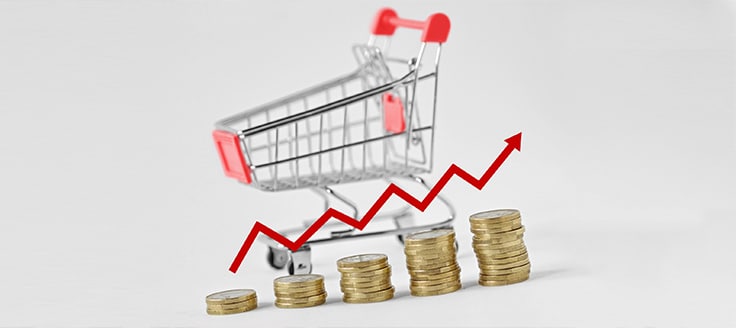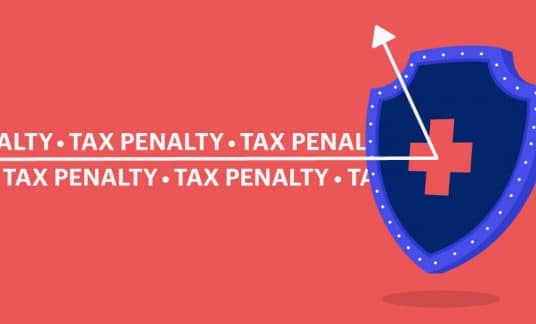Do you know how to price a product? It’s a complex issue, and there’s no simple answer. Get it right, and you’ll have a profitable business; get it wrong, and survival could be tough.
An effective product pricing strategy is a little bit of science mixed in with a splash of art. Fortunately, a rational method does exist that brings all of the variables together to create a well-thought-out pricing plan.
It involves knowing your customer, studying the competition, making the connection between quality and price and understanding how each pricing strategy works.
Let’s start with the basics.
1. Know Your Costs
A selling price must be high enough to cover all fixed and variable costs and produce a profit. Profits should never be treated as whatever is left. Instead, profits should be the first line item of an expense report. The objective is to make a profit, so put it at the top of the list.
- Variable Costs: If your company is a retailer, variable cost is the price of the merchandise purchased for resale, including charges for delivery and warehousing.
- Fixed Costs: All businesses have fixed expenses that must be paid every month, regardless of the sales volume. Fixed costs include rent, insurance, administrative salaries, utilities, internet service and accounting fees, just to list a few.
Knowing all of your costs is the starting point for developing a product pricing strategy.
2. Calculate Markup and Gross Profit
Many people misunderstand the difference between markup and gross profit margin when setting a price. This confusion can result in a fundamental pricing mistake.
Markup is an amount added to the product cost to get a selling price. The formula is:
Product Cost + (Product Cost X Markup Percent) = Selling Price
For example, if a product costs $100, and you want to add a 75-percent markup, the selling price would be:
$100 + ($100 X 75 percent) = $175
Retailers typically use a markup method known as “keystoning” to set prices. With this method, the retail price is determined by doubling the cost of the product.
If the delivered cost of the product is $100, the selling price would be $200. This is a markup of 100 percent.
The gross profit margin is a different calculation. The formula is:
(Selling Price – Product Cost)/Selling Price = Gross Profit Margin
The gross profit margin for a product that costs $100 with a 75-percent markup would be:
($175 – $100)/$175 = 42.9 percent
Notice that in this example, a 75-percent markup results in a gross profit margin of 42.9 percent. These calculations illustrate the difference between the two terms.
In the keystone pricing example, a 100-percent markup to a selling price of $200 results in a gross profit margin of 50 percent: ($200 – $100)/$200 = 50 percent
3. Calculate Your Breakeven Sales Volume
Knowing your breakeven sales volume is a vital performance metric in a pricing strategy. The formula is as follows:
Breakeven Sales Quantity = Fixed Costs/(Selling Price Per Unit – Variable Cost Per Unit)
Continuing with our example, assume the fixed costs for your store totals $115,000/year. The breakeven sales quantity would be:
Breakeven Sales Quantity = $115,000/($175 – $100) = 1,533 Units
Now, suppose you reduce the sales price to $150. The breakeven is now:
Breakeven Sales Quantity = $115,000/($150 – $100) = 2,300 Units
With a keystone pricing strategy, breakeven would be:
Breakeven Sales Quantity = $115,000/($200 – $100) = 1,150 Units
Knowing the breakeven sales quantity at various price points is an important consideration in your products pricing strategy. You have to make sure that your pricing strategy is covering fixed costs at a minimum, but you also have to consider the likelihood of reaching the required breakeven sales volume. Lower prices mean having to sell more units to reach breakeven.
4. Study Your Competition
Identify your competitors. They could be a local independent store, a large online retailer or even a big-box store in a neighboring town.
What prices are they charging? How are the competitors pricing their products? Are they setting premium prices for their products, or are they running frequent discount programs? What kind of promotions are they running?
Identify the competitor’s strengths and look for weaknesses in their product lines that you can exploit.
Look at your products to see if you can establish additional value to justify higher prices. If not, you may have to compete on price alone and create a more robust marketing and advertising campaign.
Tracking your competitors will alert you to trends, provide ideas about product diversity and highlight features to offer in your own products. Visit their websites and order their sales brochures.
5. Know Your Customer
Possibly the most important factor in developing a pricing strategy is knowing your customers. The more you know about which feature customers value and what features they want, the higher price you will be able to charge.
These are a few customer characteristics to identify:
- Where do they live?
- What is their income range?
- What is the age group, gender, marital status, profession and education level?
- Are they price sensitive?
- Do they buy for convenience?
- Are they willing to pay more for premium quality?
From this collection of data about your customers, figure out what features will cause consumers to buy your products. What are their “hot buttons?”
Set up communication channels to get regular feedback from your customers; find out how they feel about your prices and the value in your products. Make sure they know you care about their opinions.

6. Decide on a Pricing Strategy
What type of image do you want your product to have? Will it be positioned as a premium product worthy of a high price? Or will it be priced at or below the market price with the intention to grab market share and try to raise prices later?
The choices of pricing strategies are as follows:
- Penetration: Set a low price to get attention and aggressively increase market share.
- Premium: Establish exclusive value to a product that justifies a higher price.
- Competition: Offer products with prices in line with competitors.
- Product Line: Create a varied product line that offers a range of items with different price points.
- Bundle: Offer a group of products with a reduced price.
- Psychological: Set prices slightly lower than rounded up numbers – example $0.99 instead of $1.00.
7. Establish a Revenue Goal and Profit Level
After a price has been established and a pricing strategy selected, determine the sales volume needed to cover breakeven fixed costs and produce a targeted profit level.
Let’s take the example of a business with fixed costs of $115,000/year that sells 1,400 units of a product at $200 sales price and a variable cost of $100/unit. The results would be $280,000 in revenues ($200 X 1,400 units) and $140,000 in gross profit. After subtracting fixed costs of $115,000, the net profit is $25,000, or 8.9 percent ($25,000/$280,000) of sales.
Is this profit level acceptable? If so, then the revenue goal becomes $280,000, and this is the figure that gets communicated to the sales manager and staff.
8. Track Everything
Setting a price level and choosing a pricing strategy does not end the process. Every key performance metric must be tracked: sales volume, unit sales, gross profit, individual product profit margins and net profit. Any measure that is not performing to the target figure must be modified and action taken to get back on track.
Review feedback from customers. Are they satisfied? How do they feel about prices?
Nothing is static with prices. The strategy must be constantly reviewed and adjusted as necessary to meet profit goals.
Learning how to price a product is a critical skill for all small business owners. It is part math and part instinct. These tips will provide a structure to develop a product pricing strategy. It takes diligent research on customers and competitors, but the results will pay off in more sales and higher profits.










